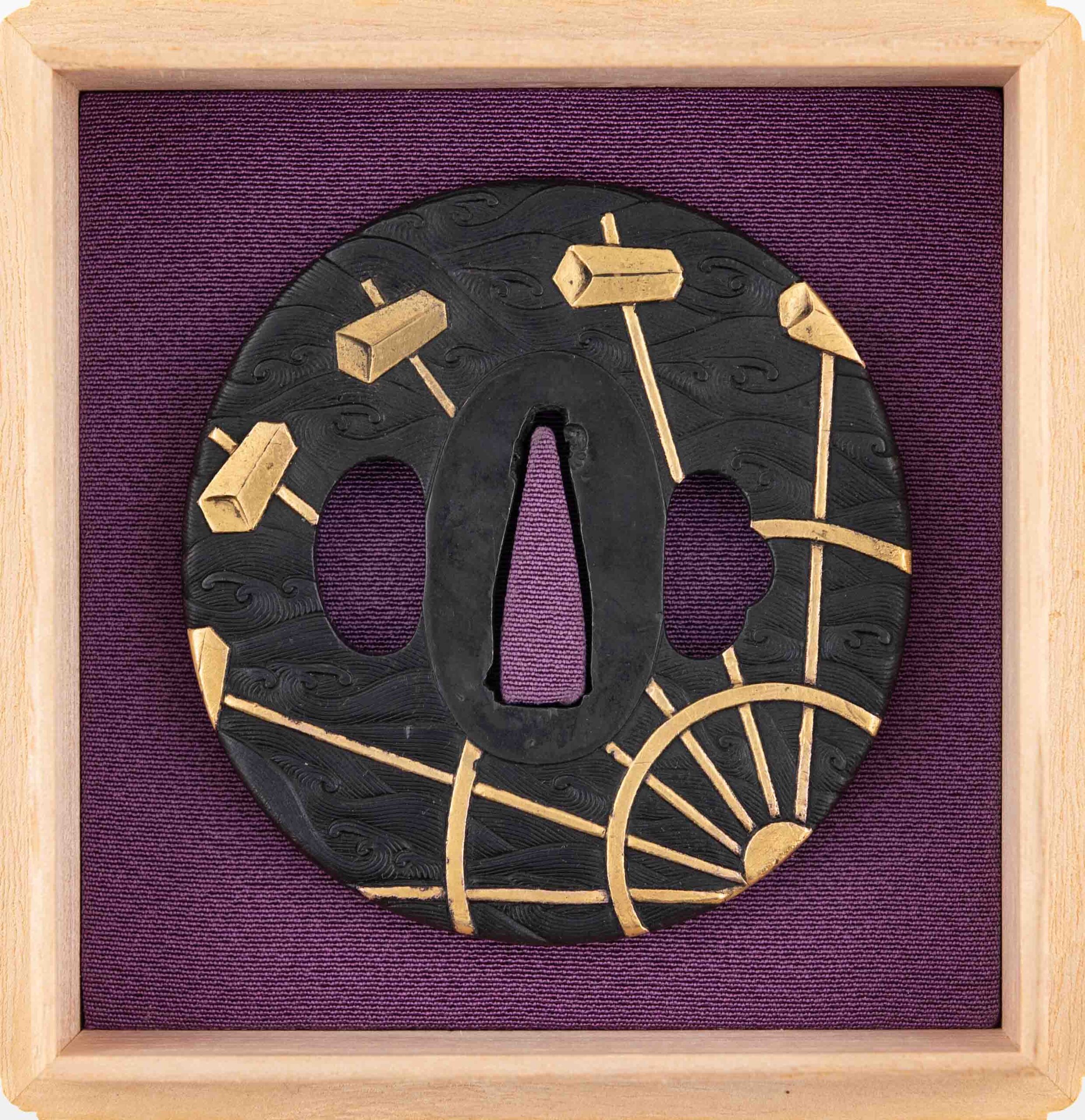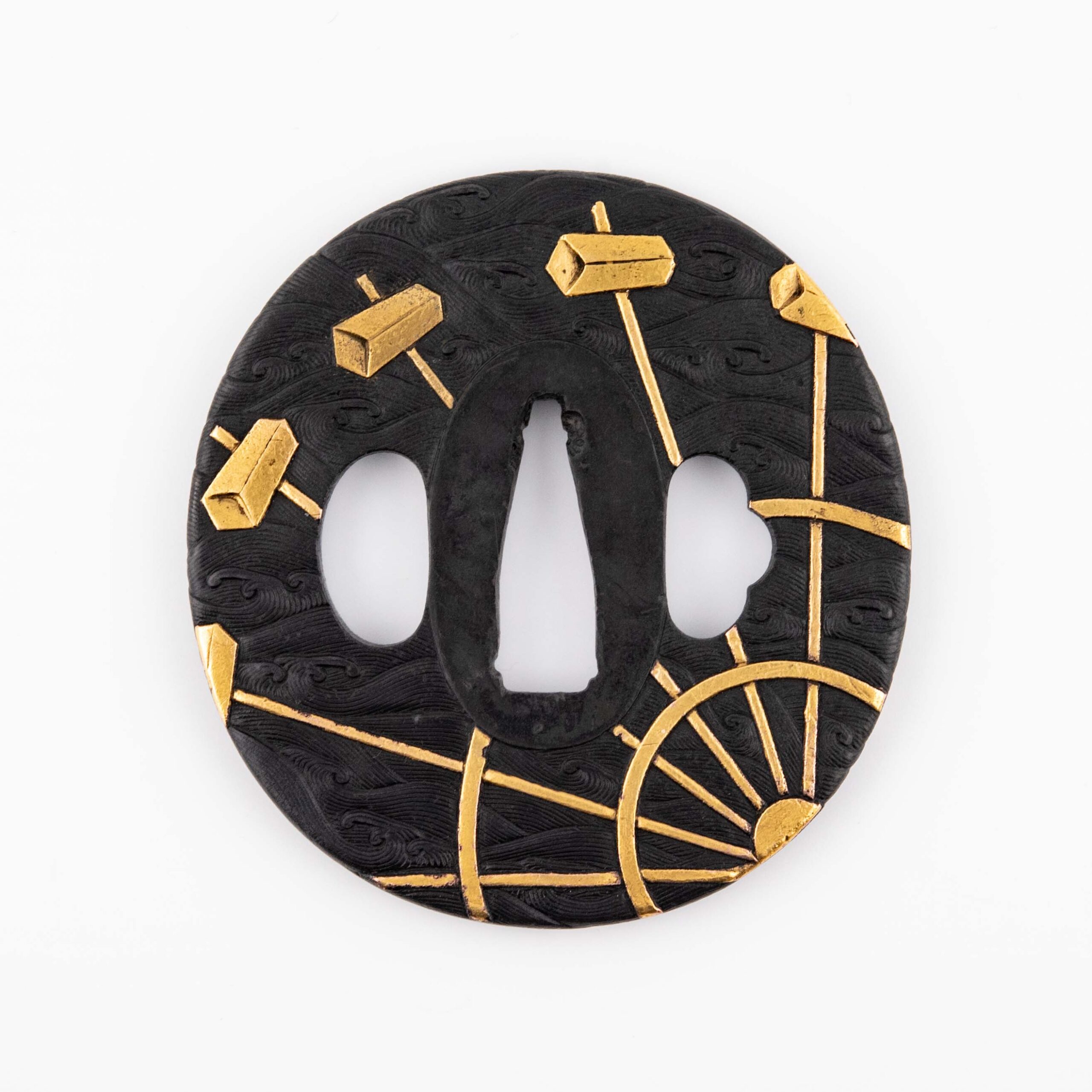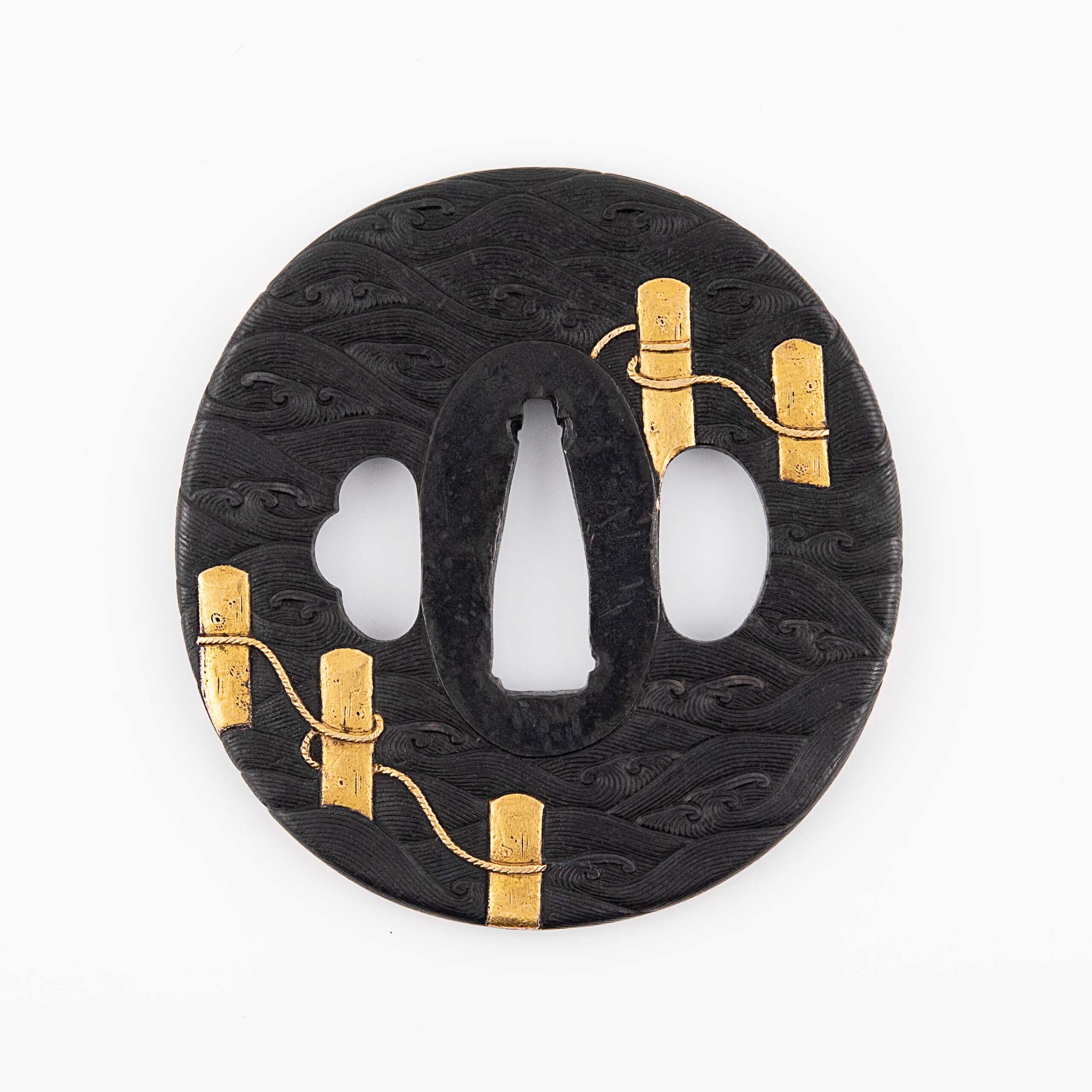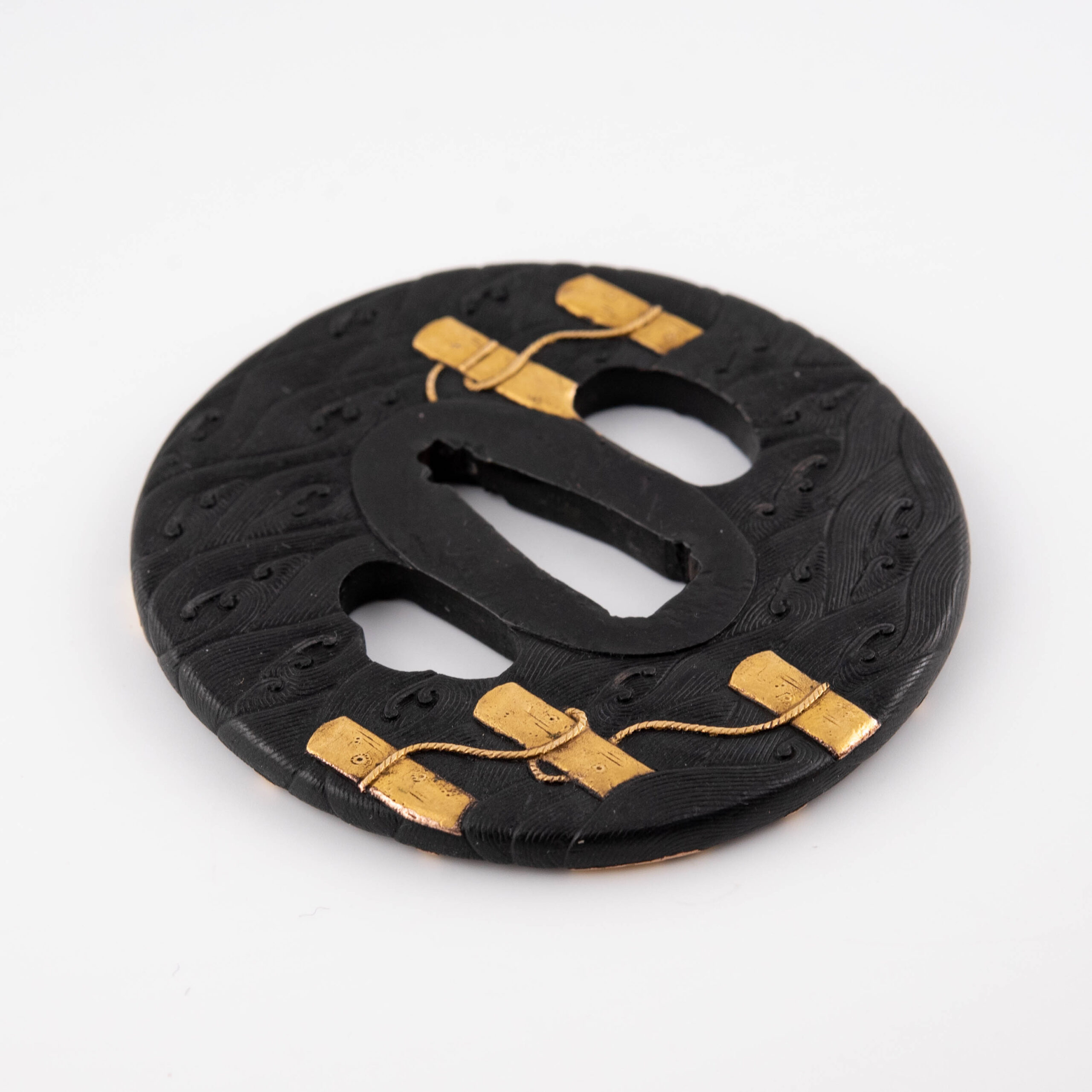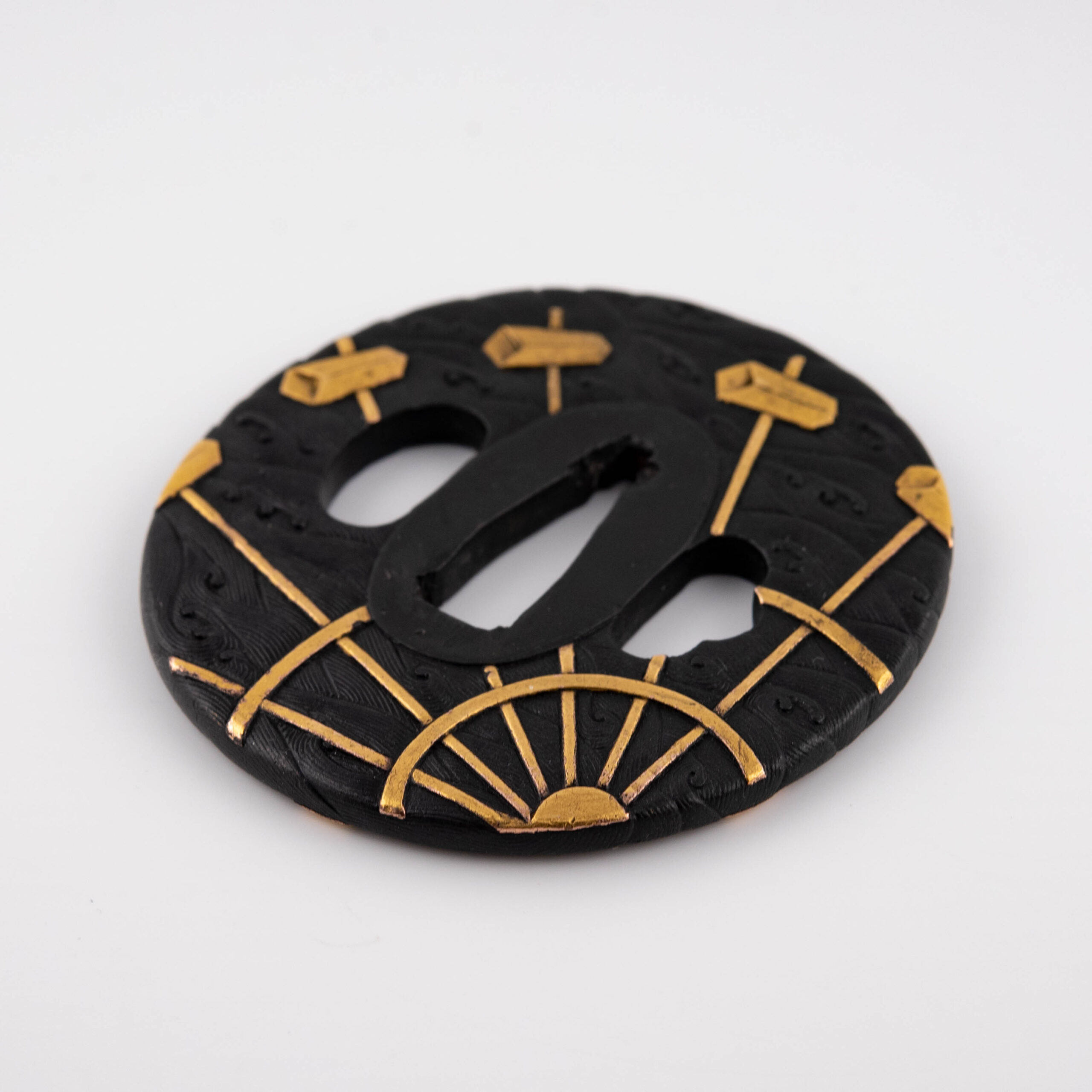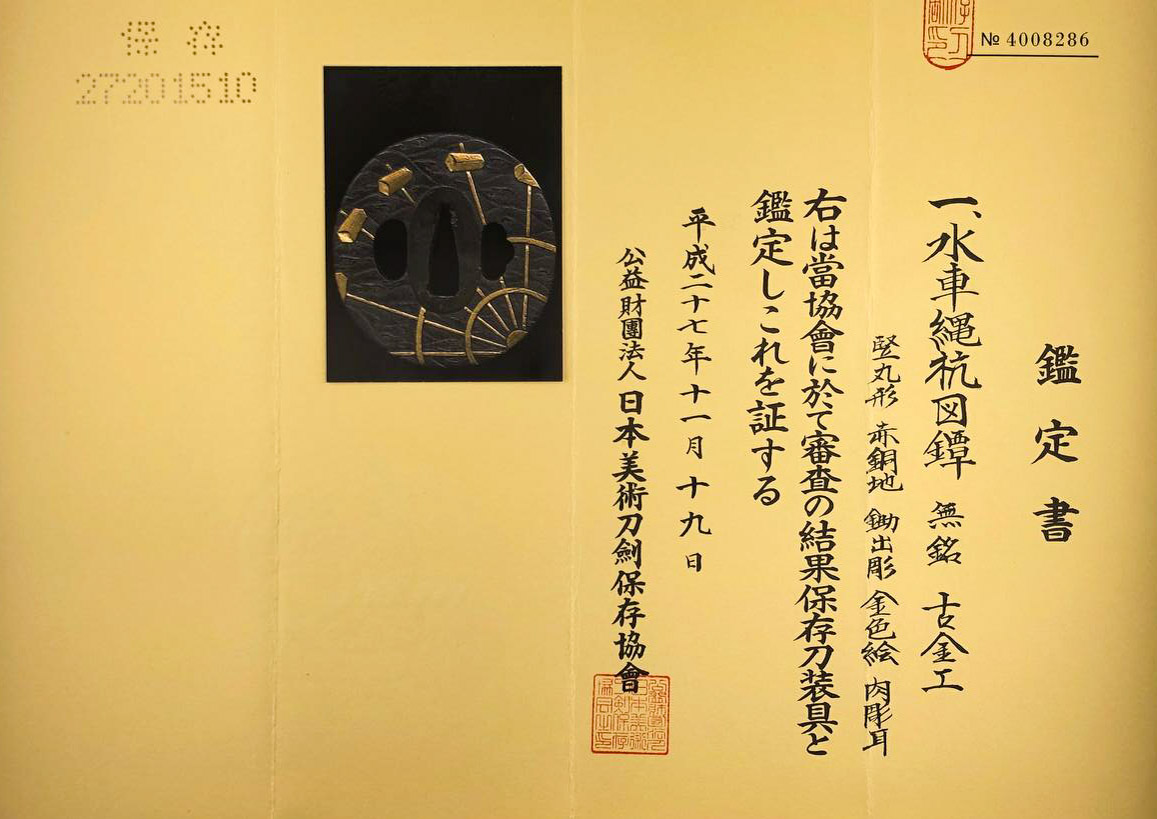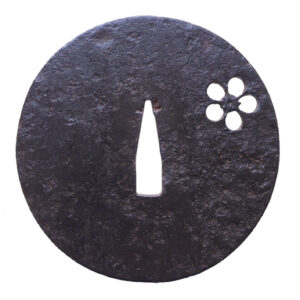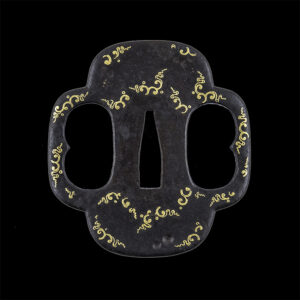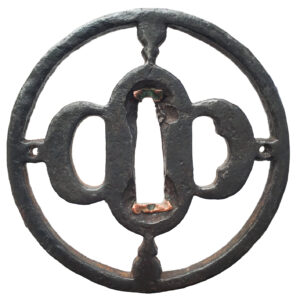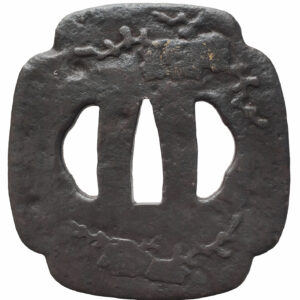This Tsuba is over 400 years old and dates back probably to the late Muromachi period, a time when Japan was in war, also called the ‘Sengoku Jidai’. Tsuba from this period which are made in soft metal, here Shakudo with gold application, are generally determined as ‘Ko-Kinko’ (old goldsmith works). During these times it was not yet common for a artists to sign their work which is why we cannot trace back these works to any specific school, but it is known that these softmetal and gold works must have been made in one of the workshops in Kyoto, which was the center of power during that time. The flat relief and the quite schematic presentation of the waves, which also flow around the rim is typical for this period. Furthermore, the interpretation of the waterwheel and the piles has some free and loose feeling to it and the application of the thin gold foil gives us a pointer to the age of this piece.
The design of this Tsuba shows an old waterwheel (‘Mizuguruma’ or ‘Suisha’ in Japanese). Waterwheels were introduced in Japan in the 7th century and during the Kamakura period already widely used for irrigation of rice fields. These early waterwheels used squared buckets to transport the water which we can see clearly on this Tsuba. The backside of the Tsuba shows wooden piles (‘Kui’) attached to each other with a rope (‘Nawa’). These piles were put in the river and bound together to direct the flow of water towards the waterwheels or in general to prevent flooding of certain areas.
However, apart from the technical history of this design, there is a hidden meaning here which is much more related to the life of a ‘Bushi’. The word Mizuguruma(水車) also carries an old archaic meaning which is ‘the violent wielding of a weapon’ or a round house strike and was first used in the ‘Genpei Josui Ki’ (the records of the rise and fall of the Genji and Heike clans). We can very much feel the intention of that the Samurai carrying this Tsuba into battle.
This Tsuba is attributed to Ko-Kinko by the NBTHK Hozon certificate.
H: 7.3 cm
W: 6.9 cm
R: 4.5 mm
Sd: 5.0 mm



